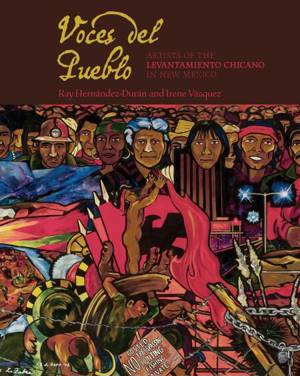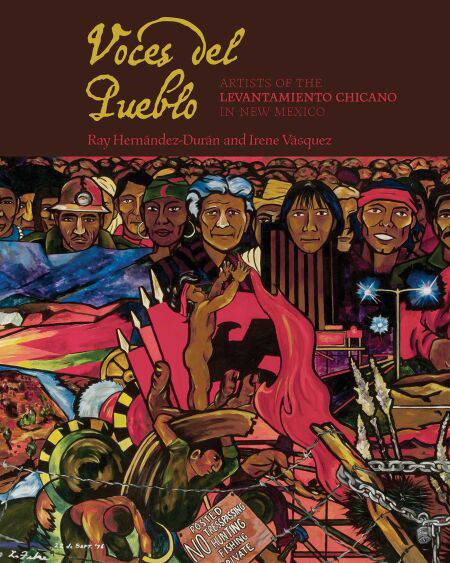
- Afhalen na 1 uur in een winkel met voorraad
- Gratis thuislevering in België vanaf € 30
- Ruim aanbod met 7 miljoen producten
- Afhalen na 1 uur in een winkel met voorraad
- Gratis thuislevering in België vanaf € 30
- Ruim aanbod met 7 miljoen producten
Voces del Pueblo E-BOOK
Artists of the Levantamiento Chicano in New Mexico
Ray Hernández-Durán, Irene Vásquez
€ 36,90
+ 36 punten
Omschrijving
Long overdue art catalog for the New Mexican Chicano movement of the 1970s. Vibrant art by activist Chicanx creatives fills an enormous gap in the history of art from the movement that blossomed in the 1960s and 1970s.
The decade between 1970 and 1980 marks an important period in the Chicanx Movement in New Mexico known as the Levantamiento Chicano or Chicanx Uprising. Artists from all over the state played important roles in the movement by providing art, participating in political discourse, and organizing actions. However, while some activists and organizers, such as Dolores Huerta, are known and celebrated nationally, most of these artists have gone unrecognized. Not only have they been overlooked in the art history and discourse of New Mexico, they have also gone unrecognized in the discussion of Chicanx art history nationally. Voces del Pueblo begins to repair this gap in the history of the Chicanx art movement. Printed in color and black and white, the book showcases nearly two hundred images, including work by six New Mexico artists as well as historical photos of the movement. Readers will also find interviews with each of these artists and contextualizing essays by the cocurators of the National Hispanic Cultural Center exhibit, Ray Hernández-Durán and Irene Vásquez, as well as scholars, such as Phillip (Felipe) B. Gonzales, Howard Griego, and Sonja Elena Gandert. The result is an incomparable look at art history in New Mexico and the importance of New Mexican artists in the Chicanx Movement.
The decade between 1970 and 1980 marks an important period in the Chicanx Movement in New Mexico known as the Levantamiento Chicano or Chicanx Uprising. Artists from all over the state played important roles in the movement by providing art, participating in political discourse, and organizing actions. However, while some activists and organizers, such as Dolores Huerta, are known and celebrated nationally, most of these artists have gone unrecognized. Not only have they been overlooked in the art history and discourse of New Mexico, they have also gone unrecognized in the discussion of Chicanx art history nationally. Voces del Pueblo begins to repair this gap in the history of the Chicanx art movement. Printed in color and black and white, the book showcases nearly two hundred images, including work by six New Mexico artists as well as historical photos of the movement. Readers will also find interviews with each of these artists and contextualizing essays by the cocurators of the National Hispanic Cultural Center exhibit, Ray Hernández-Durán and Irene Vásquez, as well as scholars, such as Phillip (Felipe) B. Gonzales, Howard Griego, and Sonja Elena Gandert. The result is an incomparable look at art history in New Mexico and the importance of New Mexican artists in the Chicanx Movement.
Specificaties
Betrokkenen
- Auteur(s):
- Uitgeverij:
Inhoud
- Aantal bladzijden:
- 304
- Taal:
- Engels
- Reeks:
Eigenschappen
- Productcode (EAN):
- 9780826368744
- Verschijningsdatum:
- 1/12/2025
- Uitvoering:
- E-book
- Beveiligd met:
- Adobe DRM
- Formaat:
- ePub

Alleen bij Standaard Boekhandel
+ 36 punten op je klantenkaart van Standaard Boekhandel
Beoordelingen
We publiceren alleen reviews die voldoen aan de voorwaarden voor reviews. Bekijk onze voorwaarden voor reviews.










